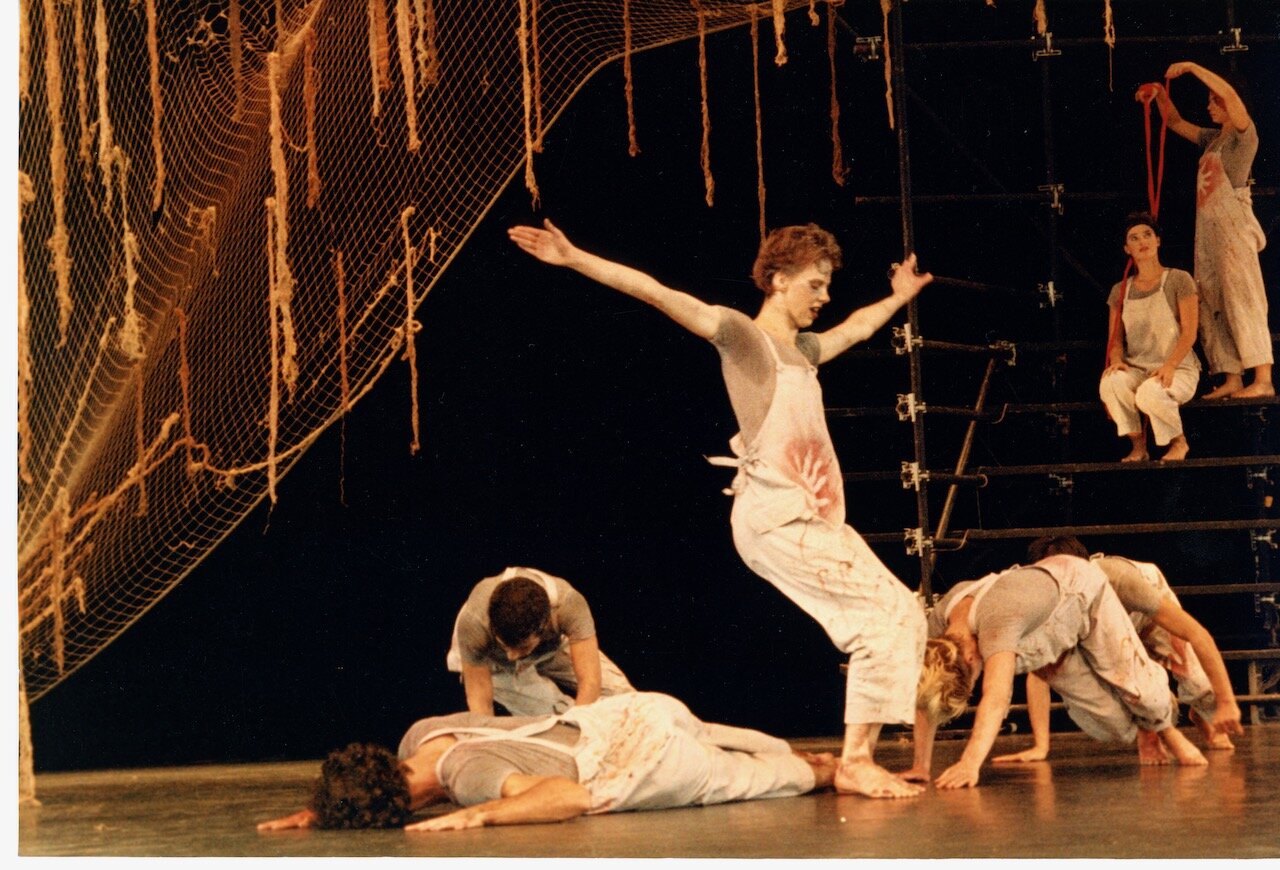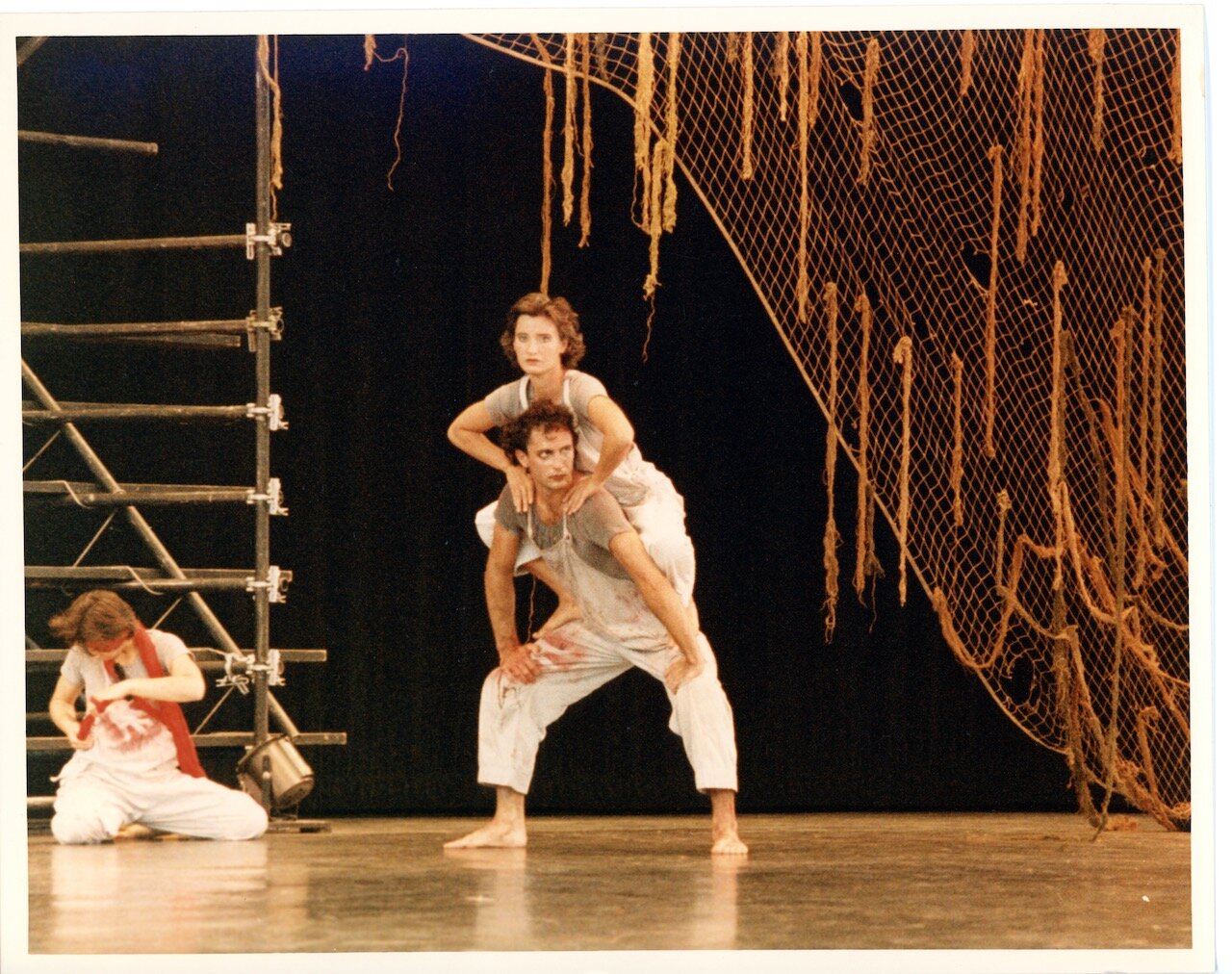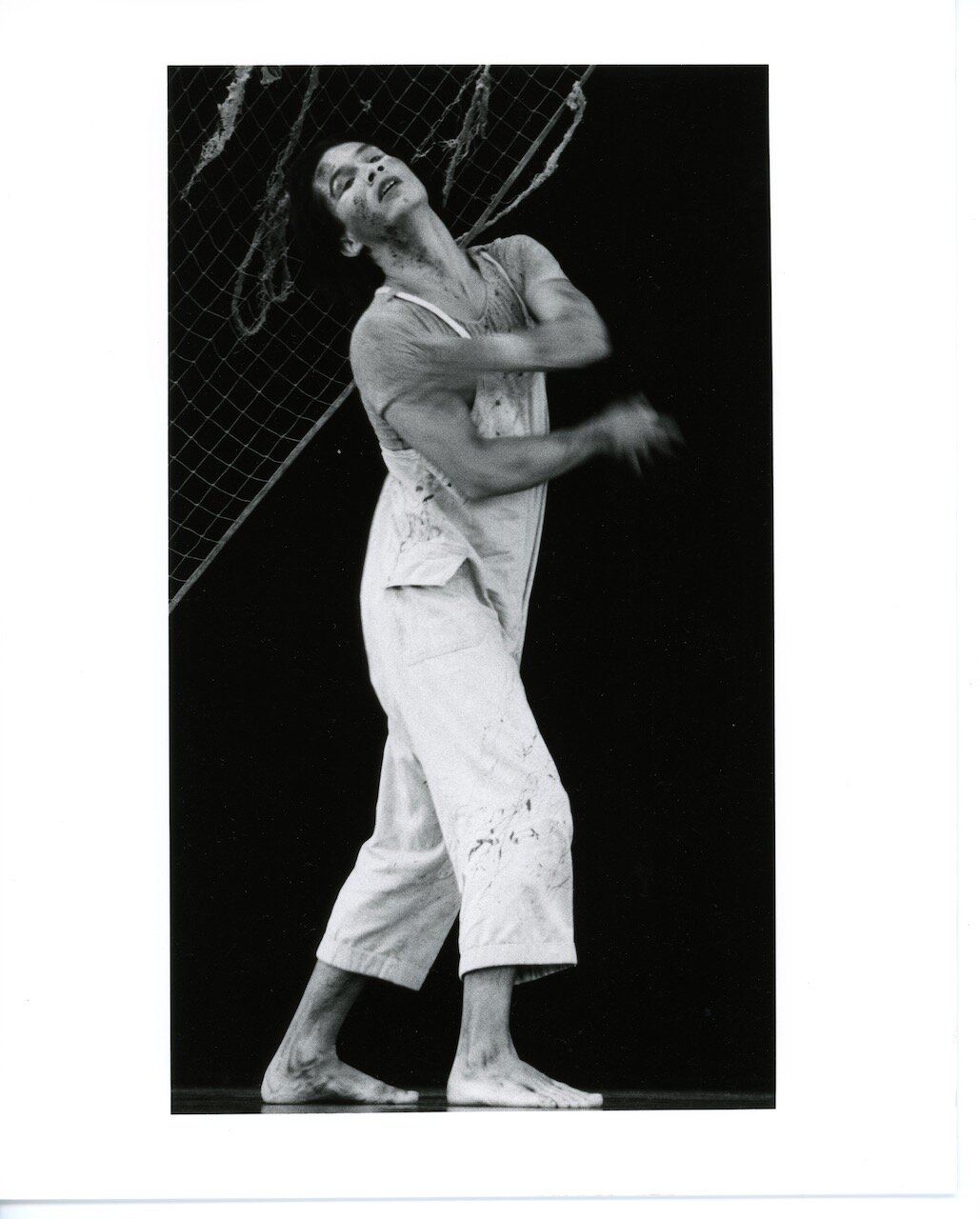Altamira

Altamira
1986
About
“In ALTAMIRA, choreographer Karen Jamieson explores ‘descent:’ descent as a whole family of physical experiences, and descent as an approach to thinking about ways humans may have “evolved” – and in what ways they remain ‘animals.’
Last Summer (1985), following the European debut of the Karen Jamieson Dance Company at the Holland Festival, Karen Jamieson and her family travelled around Europe. Along the Northwest Coast of France and Spain, they encountered the remains of stone age civilizations: mehnirs, or tall stone markers which stand along the Atlantic Coast from Portugal to the Northern British Isles–and cave paintings.
Cave paintings are no longer tourist attractions; in fact, the caves at Lascaux in France have been resealed to protect the artwork from the debilitation of fresh air. But, by making special application, [the family] was permitted to join a small group to view the paintings at Altamira, in Spain. The experience of these mysterious underground masterpieces, with the choreographer’s ongoing curiosity about essential human activities: these are the sources of Karen Jamieson’s new full-length dance work.
Dancers physically ‘descend’ in ALTAMIRA. they are born-into, the ‘melt,’ they dive, they fly, and they fall. As well, the evolution of customs and habits is explored: how instincts and feelings are transferred onto the body–why, for example, we use the same gesture (clasping ourselves) to express being cold, being fearful and being grief-stricken; why we hold our heads both to express physical sickness and emotional confusion, why we lift our arms to stretch or to be lifted and to express some kind of ecstasy or awe as well.
The movement-images of this dance are taken from myths, dreams, giving birth, prehistoric objects and poetic animals – real animals (birds and bulls), and imaginary ones (dragons). There is a goddess, there are animal-masters, and there are participants as witnesses, victims, and tyrants. ALTAMIRA features a series of solo narratives developed with the company’s seven dancers. This sequence of dramatic and intense ‘stories’ gives the work its shape, and reoccurring motifs throughout give ALTAMIRA its own ‘geneology’ and continuity.
ALATAMIRA is a ‘complete’ work: the dancing takes place within an integral sound and design environment. The music, co-composed by Bruce Ruddell and Sal Ferraras, parallels the dance. Sounds have been created for the various phases of the work, based on what the musicians have seen and sensed in the progression of rehearsals. Visual artist Art Lucs has constructed a ‘set,’ which acts as a distinctive, surrounding cave-atmosphere for the dance to unfold in; the costumes are designed by Barbara Claydon.”
- From the Altamira program handbill
The People
Performers: Daina Balodis, Jonathan Burston, Jean-Guy Cossette, Alison Crawford, Catherine Lubinsky, Alejandro Ronceria, Suzanne Trépanier, and Janice Ungaro
Composers: Sal Ferreras and Bruce Ruddell
Choreographer: Karen Jamieson
Set Design: Art Lucs
Costumes: Barbara Clayden
Lighting Design: Edward Arteaga
Graphic Design: Janie Wright
Photographers: Robert Tinker, Eduardo Meneses, Andy McGregor, Studio A Photography, and Ken Alexander
Reviews
“The Movement – images of Altamira are taken from myths, dreams giving birth, prehistoric objects and poetic animals – real animals (birds and bulls), and imaginary ones (dragons). There is a goddess, there are animal masters and there are participants and witnesses, victims and tyrants.
Altamira features a series of solo narratives developed with the company’s dancers. This sequence of dramatic and intense stories give the work ‘its shape,’ and the recurring motifs throughout give the dance its own genealogy and continuity.”
- The Citizen, April 24, 1986
“It takes a moment to catch on, but you soon realize that the trick with Karen Jamieson’s new 70-minute work of music-theatre-dance, Altamira, is to go with the flow of it. Don’t examine it step by step or move by move or even phrase by phrase. Let the rush of it sweep you along. Let its wordless movement-stories coalesce and melt in your mind like primal dreams (or nightmares)… For all its small dated hints of new-art punk (in its striped-hair-painted-face look, its Steve-Reich-meets-electropop soundscape, its occasional references to the choreography of high-style Montreal post-modernist Edouard Lock) Altamira’s cumulative effect is a powerful impression of the collective pre-civilization lifestream of human subconscious in full blood.”
- Max Wyman
The Province, Vancouver, April 3, 1986
“Whenever Karen Jamieson goes some place it is usually worth the investment of time and energy to go with her. She is a persuasive tour guide who reveals the spectacles of the moment in such a way that we can suddenly realize we have been waiting a long time for just this journey to happen, in just this way and that once she drops us off at the end we’re not really quite finished with the trip.
Altamira, her latest invitation to explore the primal substructure of culture, was presented at the VECC April 2-5. Inspired by a viewing of prehistoric cave paintings in Spain, Jamieson translates her sense of evolutionary order into an intensely physical presentation of human process. Bodies, initially almost faceless in their primordial oozing over each other, exhibit compelling urges to move, to be, to happen, long before they begin to differentiate into more recognizable human activities. The movement and the nature of the human encounters gradually become more complex but both continue to feel infused with unconscious forces.
Though Jamieson will probably be presenting this dance in a variety of theatres, the VECC seems like a perfect venue. The stage space is contained by a thick net. It is a cave and our closeness to it lets us feel huddled together at its entrance. The persuasive electronic score created for the piece by Bruce Ruddell and Salvador Ferreras and the costumes – dull grey overalls slashed with blood red paint – combine elements of our ordinary world with components of this more primeval one. The ability of the dance to envelop is further heightened by its presentation as an evening length work; nothing is allowed to distract us from the completeness of its vision.
Jamieson seems to recognize the demand for concentrated attention she is placing on the audience. She supplies ample programme notes detailing the intention and structure of the dance, a useful act which makes the work more accessible.”
- Susan Inman
”Reviews”
VANDANCE, Summer 1986
Please note that populating the Karen Jamieson Dance website with new information and images from the archives is an ongoing process that we are undertaking as fast as we can. Karen Jamieson Dance welcomes any corrections or missing information to the description and acknowledgments listed above. These can be forwarded to admin@kjdance.ca











